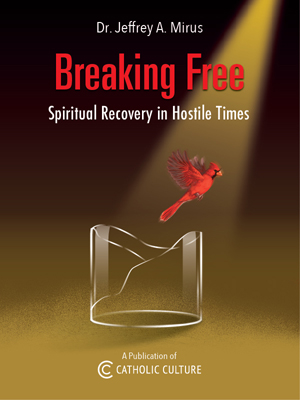The danger of appointing like-minded cardinals
By Phil Lawler ( bio - articles - email ) | Oct 13, 2016
“Once, he was sentenced to death. Now, he’ll be a Catholic cardinal.” That was the headline on a Washington Post report on the Pope’s decision to award a red hat to Father Ernest Simoni, who survived almost 30 years in forced-labor camps under Albania’s brutal Communist regime.
Am I right to detect a note of surprise in that Post headline? A suggestion that it’s anomalous for a cardinal to experience persecution? An assumption that cardinals usually live in quiet comfort in their episcopal mansions? If so, I don’t blame the headline writer; I suspect most Americans have been lulled into the same complacency.
It’s time for a reminder, then, that the red color of a cardinal’s robes is meant to symbolize his willingness to die for the faith. By that standard there can be no doubt that Father Simoni has already earned his new vestments.
What of the other 16 men chosen by Pope Francis? What do they bring to the College of Cardinals?
Cardinals have two formal duties: to advise the Pope, and upon his death or resignation, to choose his successor. To some extent those two roles are related; the prelates most likely to provide wise counsel are also likely to act wisely in choosing a new Roman Pontiff.
Other considerations come into play, however. Pope Francis has made a point of internationalizing the College, this year choosing archbishops from six missionary territories, six countries that have never before had a cardinal. The benefit of that approach is obvious. Popes have always had access to plenty of information and advice about the welfare of the Church in Italy; now Pope Francis will hear more about the Church in Mauritius, Bangladesh, Papua New Guinea, and the Central African Republic.
Nearly everyone applauds the broader geographical distribution of the College of Cardinals. But another pattern that has emerged from Pope Francis’ choices is more controversial. The Holy Father has discarded the assumption that some large archdioceses are “cardinalatial sees”—that the archbishops in these cities will be made cardinals, more or less automatically, as soon as their predecessors die or pass their 80th birthdays.
In the US, for example, it would have been taken for granted in the past that Archbishops Charles Chaput of Philadephia, José Gomez of Los Angeles, Allen Vigneron of Detroit, and Blase Cupich of Chicago would all be in line to receive red hats, at this or some future consistory, since in every case their predecessors had all been cardinals, going back for several decades. (Archbishop William Lori of Baltimore was a special case. Baltimore had traditionally been a cardinalatial see, but its prominence has waned as the importance of neighboring Washington has waxed, and Archbishop Lori’s immediate predecessor, Cardinal Edwin O’Brien, received his red hat only after leaving his post in Baltimore to become grandmaster of the Knights of the Holy Sepulchre.) Pope Francis picked only one name from that list: Archbishop Cupich, whom he had elevated to the Chicago see just two years earlier.
The Pope has the freedom and authority to make his own choices. Nowhere is it written the Los Angeles and Philadelphia and Detroit “deserve” a cardinal-archbishop. Nor is it necessarily true that some who serves well as the archbishop of a major city would serve well as a papal adviser or elector. Still there is some wisdom in the tradition of the cardinalatial sees.
If it makes sense that the Pope should seek broad geographical representation in the College of Cardinals, it also makes sense that he should seek representatives of some of the world’s most important cities, and some of the Church’s largest groups of believers. To the case of the US again, there is a strong argument to be made for appointing a prelate from Los Angeles, which is by far the largest archdiocese in the country. When that prelate is Archbishop José Gomez, and his appointment would give the US its first Latino cardinal, the argument is doubly compelling. The appointment would have given representation to both the largest city and the fastest-growing group within the American Church.
Instead the Pope chose Archbishop Joseph Tobin of Indianapolis, a comparatively tiny see. Why? Vatican-watchers have been unanimous in their analysis of the Pope’s selections. He chose Archbishops Cupich and Tobin (and De Kesel of Belgium and Osoro Sierra of Madrid) because he likes the way they think—because they think the way he does. For that matter the 3rd American on the Pope’s list, Bishop Kevin Farrell (who is Irish-born, and no longer a member of the US bishops’ conference since his appointment to a Vatican dicastery), has also been a leading booster of Pope Francis, making the remarkable statement that anyone who does not understand the Pope must not understand the New Testament.
Again, the Pope is free to choose his own counselors. But a wise leader, when he chooses advisers, does not always select those who share his views. He wants different perspectives; he wants his ideas to be challenged; he wants his ideas to be refined by energetic critiques before they are implemented. As he surrounds himself with a coterie of like-minded advisers, Pope Francis risks creating exactly the sort of insular, “self-referential” culture that he had pledged to drive out of the Vatican when he was first elected as Peter’s Successor.
All comments are moderated. To lighten our editing burden, only current donors are allowed to Sound Off. If you are a current donor, log in to see the comment form; otherwise please support our work, and Sound Off!








